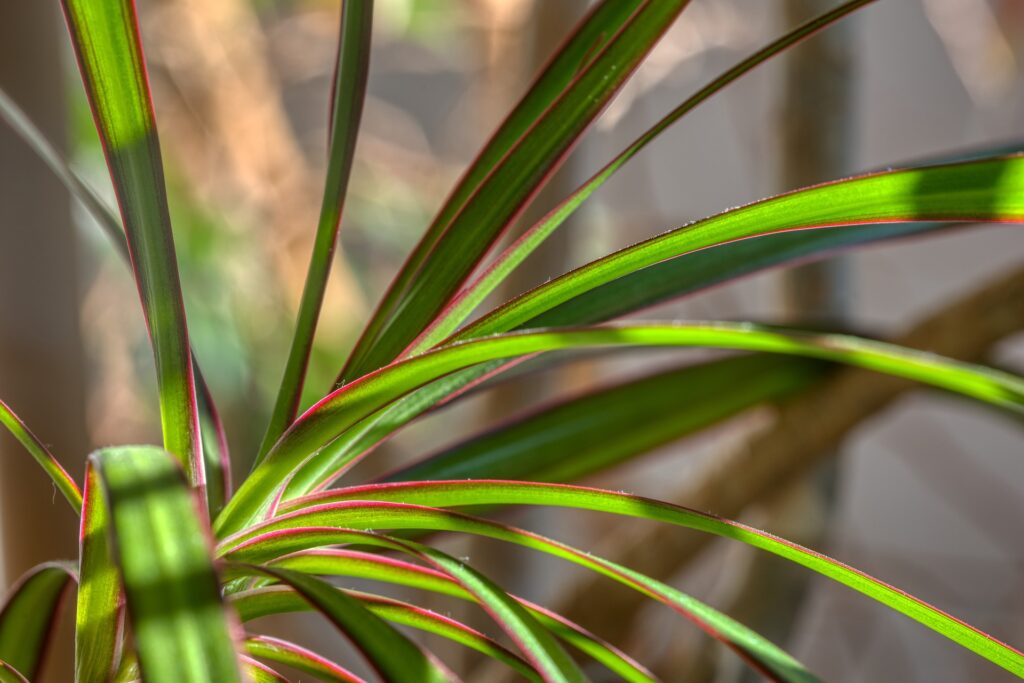In this guide, we’ll walk you through everything you need to know about propagating dracaena, from selecting the right type to care tips for ensuring successful growth.
What is Dracaena?

Dracaena is a genus of about 120 species of trees and succulent shrubs, mainly native to tropical and subtropical regions. These plants are known for their long, arching leaves, which can come in a range of colors and variegations. Popular varieties include Dracaena marginata, Dracaena reflexa, and Dracaena fragrans. Whether you’re new to indoor plants or a seasoned plant enthusiast, dracaena can make a beautiful addition to your home.
Propagation Methods
Dracaena can be propagated using two main methods: stem cuttings and water propagation. Here’s how to do both!
1. Stem Cuttings
Step-by-Step Process:
Select a Healthy Plant: Choose a robust dracaena as your source. Look for healthy stems with fresh growth.
Take Cuttings: Using sharp, clean scissors or pruning shears, cut a healthy stem 4-6 inches long. Ensure your cutting has at least two leaves.
Remove Lower Leaves: Strip the lower leaves from the cutting, leaving just a few at the top. This helps the cutting focus its energy on root development.
Let it Callous: Place the cut end of the stem in a dry area for a few hours or overnight. This allows the cut end to callous, reducing the risk of rot when placed in soil.
Planting:
Soil Preparation: Use a well-draining potting mix, preferably one designed for houseplants.
Plant the Cutting: Make a hole in the soil with your finger or a pencil and gently insert the cutting, ensuring that at least one node (where the leaves emerge) is buried in the soil.
Watering: Lightly water the soil after planting to settle it around the cutting. Make sure not to soak it, as this can lead to rot.
Care Tips:
Humidity: Place the pot in a location with higher humidity, such as a bathroom, or cover with a plastic bag to create a mini greenhouse effect. Just be sure to remove the cover occasionally for ventilation.
Light: Position the cutting in indirect sunlight. Too much direct sun can scorch the leaves, while too little light can hinder growth.
Watering: Keep the soil slightly moist but not soggy. Once you see new growth, you can reduce watering.
2. Water Propagation
Step-by-Step Process:
Prepare the Cutting: Similar to stem cuttings, choose a healthy stem and cut 4-6 inches long. Remove lower leaves, leaving a couple at the top.
Place in Water: Submerge the cut end in a glass of water, ensuring the lowest leaves are above the waterline to prevent rot.
Care Tips:
Light: Keep the glass in a spot with bright, indirect light.
Water Changes: Change the water every week to keep it fresh, and monitor for any signs of algae or rot.
Once roots develop—usually in about 2-4 weeks—you can transplant your rooted cutting into soil following the same care tips as above.
Troubleshooting Common Issues
Yellowing Leaves: This may indicate overwatering. Ensure the soil is well-draining and only water when the top inch of soil feels dry.
Root Rot: Check for mushy stems or a foul smell. If you suspect root rot, remove the plant from the pot, trim away damaged roots, and repot in fresh soil.
Leggy Growth: If your new plants seem to stretch awkwardly, they may be seeking more light. Make sure they are getting enough indirect sunlight.
Conclusion
Propagating dracaena is a rewarding process that can lead to a flourishing collection of beautiful plants. With just a few simple steps, you can multiply your indoor greenery and share the joy with others.





